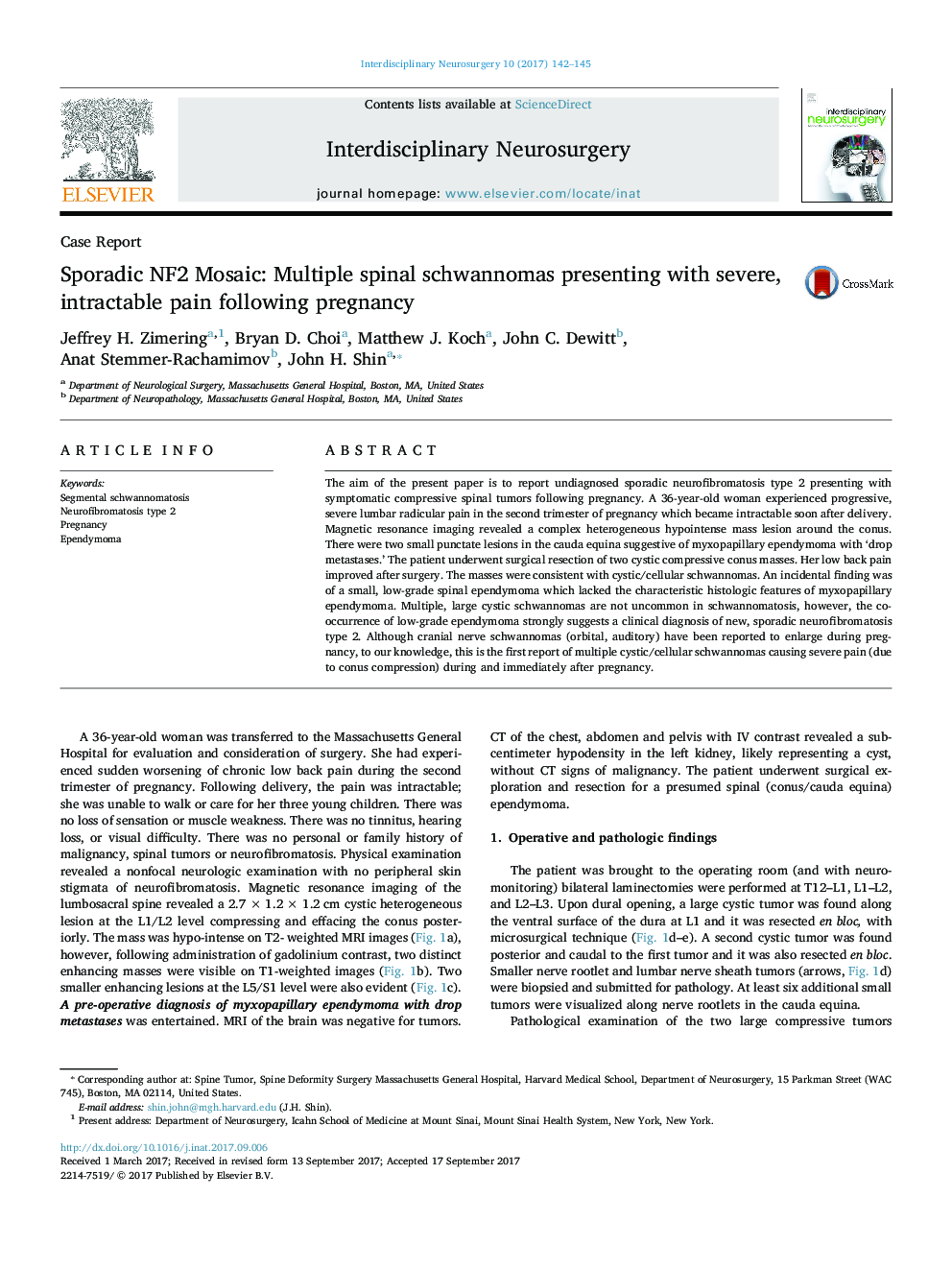| Article ID | Journal | Published Year | Pages | File Type |
|---|---|---|---|---|
| 5629405 | Interdisciplinary Neurosurgery | 2017 | 4 Pages |
â¢A woman with compressive spinal schwannomas and spinal ependymoma presented with post-partum intractable pain.â¢Complete en bloc resection of two vascular spinal schwannomas produced long-lasting complete resolution of pain.â¢Myxopapillary ependymoma was entertained owing to small distal thecal sac lesions radiographically-like 'drop metastases'.â¢Mosaic INI-1 immunoreactivity confirmed schwannomatosis or undiagnosed spinal segmental sporadic neurofibromatosis type 2.
The aim of the present paper is to report undiagnosed sporadic neurofibromatosis type 2 presenting with symptomatic compressive spinal tumors following pregnancy. A 36-year-old woman experienced progressive, severe lumbar radicular pain in the second trimester of pregnancy which became intractable soon after delivery. Magnetic resonance imaging revealed a complex heterogeneous hypointense mass lesion around the conus. There were two small punctate lesions in the cauda equina suggestive of myxopapillary ependymoma with 'drop metastases.' The patient underwent surgical resection of two cystic compressive conus masses. Her low back pain improved after surgery. The masses were consistent with cystic/cellular schwannomas. An incidental finding was of a small, low-grade spinal ependymoma which lacked the characteristic histologic features of myxopapillary ependymoma. Multiple, large cystic schwannomas are not uncommon in schwannomatosis, however, the co-occurrence of low-grade ependymoma strongly suggests a clinical diagnosis of new, sporadic neurofibromatosis type 2. Although cranial nerve schwannomas (orbital, auditory) have been reported to enlarge during pregnancy, to our knowledge, this is the first report of multiple cystic/cellular schwannomas causing severe pain (due to conus compression) during and immediately after pregnancy.
